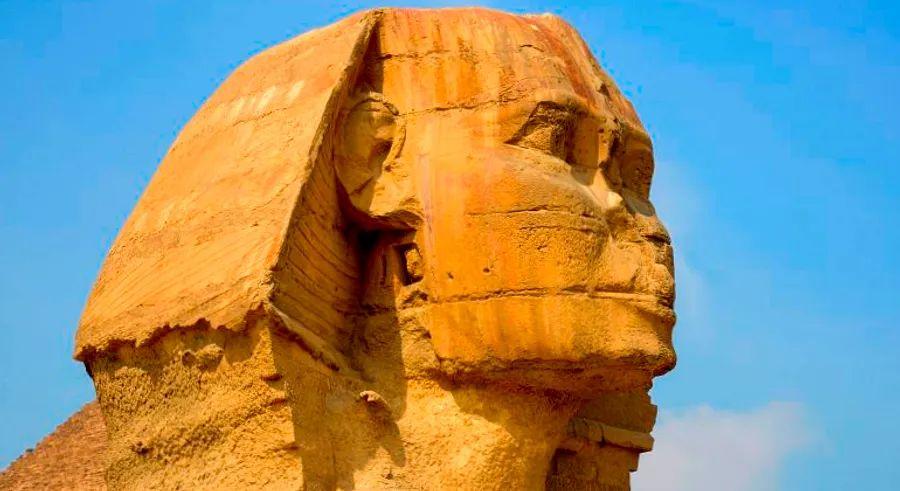The Fascinating Legacy of Ancient Egypt

Like the infamous mummy’s curse, ancient Egypt’s secrets refuse to stay buried. Time and again, it resurfaces—first with the groundbreaking discovery of King Tut’s tomb in the 1920s, again in the 1970s with the global exhibition of golden artifacts, and now with an exciting wave of discoveries driven by cutting-edge archaeological techniques.
In just the past year, Egypt’s Ministry of Antiquities has revealed several remarkable finds, including:
• The unearthing of a 4,400-year-old tomb at the Saqqara archaeological site
• Eight mummies from the Ptolemaic Dynasty (323-30 BC), many preserved in intricately painted coffins, discovered at the Dahshur necropolis near Giza
• A stone sphinx located at Kom Ombo, a temple by the Nile near Aswan, devoted to the crocodile god Sobek
• A remarkably advanced 4,500-year-old ramp system at the Hatnub alabaster quarry in Egypt’s Eastern Desert, possibly holding the key to understanding how the ancient Egyptians constructed the pyramids
• A 3,200-year-old chunk of sheep and goat cheese found in a tomb at Saqqara, marking the first known evidence of cheese in the ancient Egyptian diet
• A well-preserved female mummy, accompanied by approximately 1,000 ushabti figurines meant to serve the deceased in the afterlife, discovered in a 17th Dynasty tomb near the Valley of the Kings
Egypt is also experiencing a museum renaissance, with new exhibitions set to open soon in Sharm el-Sheikh and Hurghada. These collections will offer beachgoers a chance to explore ancient Egyptian treasures without needing to travel to Cairo or Luxor.
The long-anticipated Grand Egyptian Museum (GEM) is nearing completion. After numerous delays, this monumental museum, the largest in the world dedicated to a single civilization, is now expected to open its doors in mid-2020.
Located just beside the Giza Pyramids on the edge of Cairo, the GEM will display over 100,000 artifacts, including every item ever discovered in Tutankhamun's tomb, many of which have never been seen by the public before.
While fans of ancient Egypt may need to wait a little longer for the GEM's debut, there is still an abundance of Egyptian history ready to explore right now when you visit:
Egyptian Museum
Until the GEM opens and the artifacts are transferred to Giza, the original Egyptian Museum in downtown Cairo, overlooking Tahrir Square, remains home to the world's finest collection of ancient Egyptian relics.
Much like the iconic warehouse scene in 'Raiders of the Lost Ark,' the Egyptian Museum is a sprawling maze of relics, both grand and minute, scattered across a massive building constructed by the British in 1902. The Mummy Room and Tutankhamun’s Treasure are essential stops. However, all the artifacts are slowly being relocated to the new Grand Egyptian Museum in Giza.
Pyramids at Giza

Massive, imposing, and awe-inspiring, the three pyramids of Giza stand unmatched by anything else on Earth. Nestled between the vast Sahara desert and the growing urban sprawl of Cairo, these ancient structures were constructed over 4,500 years ago as royal tombs for three pharaohs of the Old Kingdom. The largest of them, the Great Pyramid of Khufu, consists of 2.3 million stone blocks weighing a staggering 5.75 million tons—16 times heavier than the Empire State Building.
While climbing the pyramids is no longer permitted, visitors can still venture into the burial chambers, admire the solar boats uncovered near the structures, or take a memorable photo on a camel with the pyramids towering in the background.
The Great Sphinx
Situated at the base of the pyramids, the Sphinx is the oldest monumental sculpture known in Egypt, carved from the limestone bedrock of the Giza plateau during the 26th century BC.
A symbol of the ancient civilization that created it, the 240-foot-long statue merges the body of a lion with the head of a human, forming a formidable creature that was later named 'The Terrifying One' by invading Arabs.
Step Pyramid of Saqqara

Situated approximately 20 miles south of Cairo in the fertile Nile Valley, this mud-brick pyramid served as the blueprint that ignited the pyramid construction boom in ancient Egypt.
Pharaoh Djoser initially commissioned a traditional flat, rectangular tomb known as a mastaba. However, the architect decided to innovate by stacking six smaller mastabas on top of each other, ultimately creating a structure about 200 feet tall — now recognized as the world's first true pyramid.
Alexandria
Though the famous lighthouse, once one of the Seven Wonders of the Ancient World, collapsed into the harbor centuries ago, Alexandria, Egypt's second-largest city, still holds many remarkable remnants from the Greek and Roman eras. Among them are the haunting Catacombs of Kom el Shaqafa, the ruins of Kom el Dikka, and the imposing Pompey’s Pillar flanked by twin sphinxes.
Reviving the iconic library that was destroyed in the 3rd century AD, the cutting-edge Bibliotheca Alexandrina now houses four museums, one of which is dedicated to the rich history of ancient Egypt.
Valley of the Kings
After their mummification, Egypt’s New Kingdom pharaohs were entombed in hidden chambers within a desolate desert gorge, located on the west bank of the Nile. To date, 63 tombs have been uncovered, the latest in 2005. While most of the treasures were looted long ago by grave robbers, the tombs' walls remain masterpieces of ancient art, covered in vivid depictions of gods, daily life, and hieroglyphs.
A select number of tombs are open to the public on a rotating schedule, including the final resting places of famous pharaohs such as Tutankhamun, Ramses IV, and Thutmose III.
Temple of Karnak

On the opposite bank of the Nile from the Valley of the Kings stands Egypt’s largest ancient temple, the Temple of Karnak. Built over centuries, it features a wealth of monumental stone structures, including the grand Hypostyle Hall with towering lotus columns and the lengthy Avenue of Sphinxes.
Karnak is a must-see by day to appreciate its intricate architecture, but a second visit at night for the spectacular sound and light show is also highly recommended.
Temple of Luxor
Situated on the banks of the Nile in the heart of its namesake city, the Temple of Luxor is a smaller replica of Karnak, featuring its own massive statues and towering lotus columns.
Some scholars speculate that this temple was once the site of royal coronations. It's best experienced after nightfall when the temple is beautifully lit, offering perfect conditions for photography—especially compared to the imposing Karnak.
Temple of Hatshepsut
On Luxor's west bank, numerous mortuary temples dot the landscape, but none compare to the magnificence of the Temple of Hatshepsut. Its design is unique, with a long ramp leading up to three levels of stone columns, all set against the backdrop of a towering sandstone cliff.
Like many other rulers, the queen was laid to rest in a hidden tomb within the Valley of the Kings. However, her mortuary temple remained accessible for those wishing to honor her legacy after death.
Abu Simbel
Buried beneath the desert sands for millennia, the Abu Simbel temples were rescued from the rising waters of Lake Nasser in the 1960s through a remarkable relocation project. These temples once marked the southernmost point of ancient Egypt.
Carved directly into the rock face, four giant statues of Ramses the Great stand guard at the entrance to a sanctuary lined with even more colossal figures. Twice a year, on February 22 and October 22, the sun illuminates the central passage, casting light upon the statues of Ramses and three gods.
Philae Temple Complex

Abu Simbel wasn't the only ancient temple saved from the Aswan dams. A magnificent temple complex on Philae Island was also preserved from the rising lake waters.
Dedicated to the goddess Isis, the primary temple, constructed in the 4th century BC, is believed to be the final site where the ancient Egyptian religion was practiced and the last place where original hieroglyphics were carved. The temple complex can only be accessed by small boat from a dock near the Old Aswan Dam.
Siwa Oasis
In 331 BC, Alexander the Great crossed the Sahara Desert to consult an oracle who declared him the legitimate heir to the pharaohs of Egypt.
The ruins of the Temple of the Oracle of Amun, dating back to the 26th Dynasty, stand atop a hill with views over the palm-fringed oasis. The theory that Alexander was buried at Siwa remains unconfirmed.
Tell el Amarna
Located approximately 200 miles (320 km) south of Cairo in the Nile Valley, Tell el Amarna was once known as Akhetaten, the brief capital of Egypt during the 14th century BC.
Founded by Akhenaten, the husband of Queen Nefertiti and father of Tutankhamun, Akhetaten was the center of his radical monotheistic cult. After the pharaoh's death, the city was abandoned and swallowed by the desert until the 1790s, when Napoleon's scholars rediscovered its ruins. Among the site’s treasures are the twenty-four richly adorned tombs of the nobility.
Ramesseum
Literature enthusiasts will recognize the fallen giant head near this 13th-century BC temple as the Ozymandias immortalized in Percy Bysshe Shelley's famous sonnet.
Situated across the Nile from Luxor, this grand structure is the mortuary temple of Ramses the Great, the same pharaoh who ordered the construction of Abu Simbel. Along with the iconic toppled Ozymandias, the site features other massive statues of deities and the legendary ruler himself, often regarded as Egypt’s greatest pharaoh.

1

2

3

4

5
Evaluation :
5/5